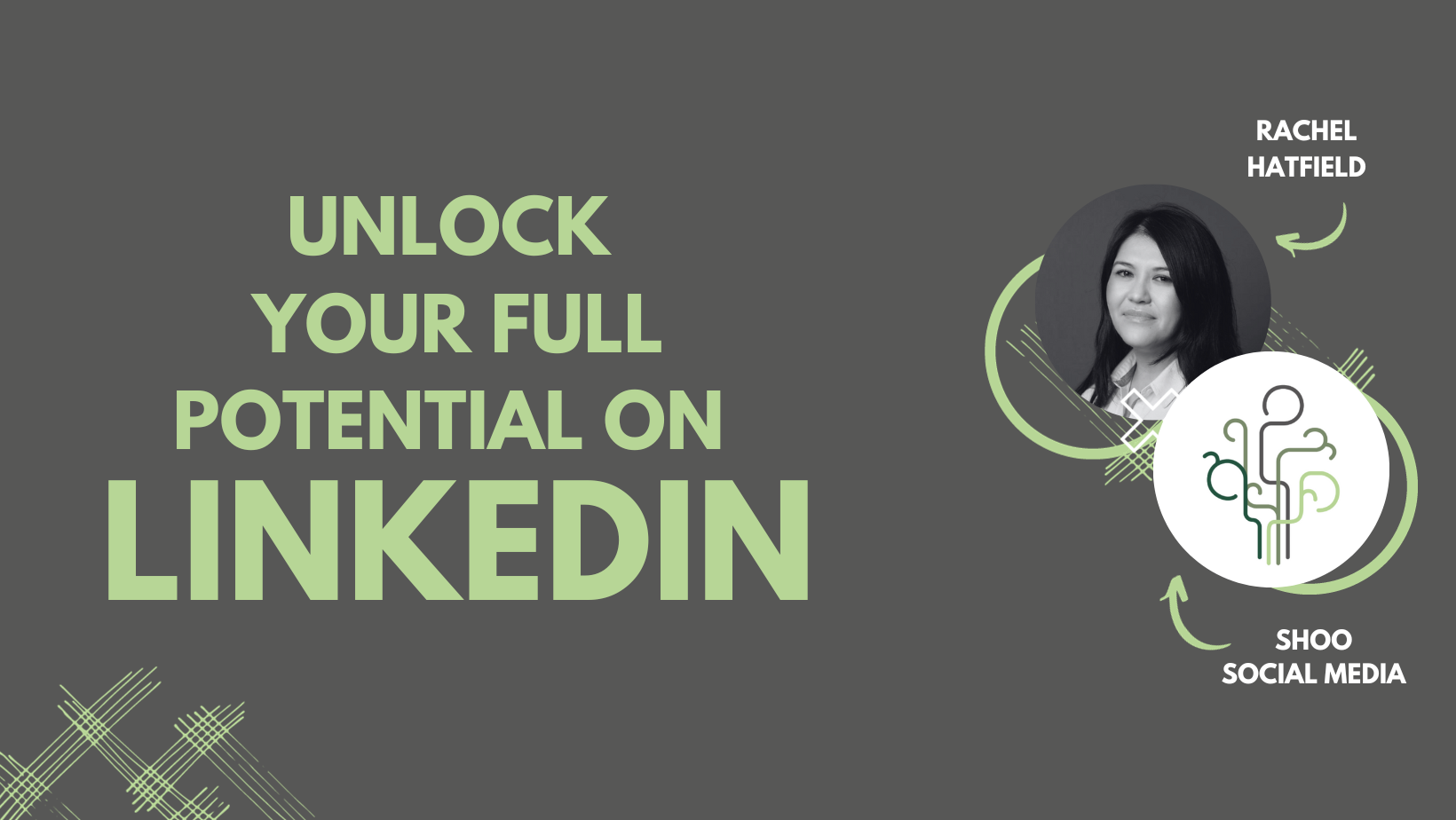How social media can help your business win the War for Talent
COVID-19 pandemic has had far-reaching consequences for our lives and the society in which we live. Some of these – such as restrictions on travel and socialising – are temporary and are already passing into history. However, others have been profound and lasting. None more so than in our collective relationship with work.

In recent months, it has been hard to miss the many reports about The Great Resignation. People are quitting their jobs in record numbers and the trend shows no sign of abating. A recent article in The Evening Standard states that UK employees resignations are at levels not seen since 2009. It is a similar story in other developed economies: According to Forbes, a record 4.5 million Americans quit their jobs in November 2021, while US employers posted an unprecedented 10.6 million job openings in the same month.
Reassessing our relationship with work
The pandemic caused many people to reassess what was important in their lives, while the mass-experiment of remote working during lockdowns proved that we could work flexibly and effectively from home without commuting for hours. People were able to spend more time with their families, doing the things they enjoy, while still being productive in their roles. Now the restrictions of the pandemic are lifting, some workers are being forced to return to the office. They are reluctant to give up their new-found work-life balance and they are voting with their feet.
The War for Talent
This mass-exodus of employees has coincided with rapid post-pandemic economic recovery to create a perfect storm for business leaders, HR professionals and recruiters. Experienced workers are quitting in large numbers, while newly created roles – essential for business growth – are going unfilled. This is, in turn, increasing workloads for the employees left behind and causing them to reassess their own positions in a self-perpetuating cycle of attrition. Meanwhile, an ageing population means the pool of suitably experienced talent from which businesses can recruit is shrinking. As Baby Boomers and Generation Xers approach retirement and leave the workforce, there are not enough experienced Millennial and Generation Z workers to replace them. The demand for talent far exceeds supply and competition between employers is becoming fierce. The Great Resignation has created The War for Talent and the victors will be the organisations that attract and retain the right people.

Innovate to survive
This new reality has created two interdependent challenges for employers. Firstly, they need to adapt what they are offering so that it is appealing to workers; secondly, they need to find new ways of making their voices heard above the cacophony of other organisations competing for talent. There are no shortcuts, but there are tools out there that can help. One of the most powerful of these is social media.
Social recruitment
LinkedIn is testimony to the potential of social media for sourcing talent and building professional networks; however, it is by no means the only social media channel able to support your organisation with recruitment and employee retention. Indeed, it is not always the most suitable solution. Platforms such as Instagram, Facebook and YouTube can also offer substantial advantages in terms of employer brand recognition, audience segmentation, reach and cost-effectiveness.
Limitations of LinkedIn
One of the problems with recruiting on LinkedIn is distinguishing between members and actual active users of the platform. According to Social Media Today, LinkedIn’s owner Microsoft reported that the platform had 720 million members worldwide in 2020; however, the number of monthly active users (MAUs) are unofficially estimated to be around fifty percent lower. LinkedIn does not publish MAU statistics. Why would they, when overall membership numbers appear so much more impressive to potential advertisers? But this disparity can have a significant impact on ROI – especially, when you consider the cost of LinkedIn advertising compared to other platforms. New paragraph
Reaching passive candidates
Many people only use LinkedIn if their profession requires them to, or if they are actively looking for work. Otherwise, they prefer to spend their free time on other, more entertainment-focussed platforms. This doesn’t mean that they are not open to new opportunities, they just need convincing that the time is right for a change. Organisations that can effectively connect and engage with these passive candidates will open a significant untapped pool of talent that would otherwise be beyond reach.
Content marketing meets recruitment
As with any effective social media marketing strategy, the success of a social media passive recruitment campaign depends on careful targeting, using the right platforms and above all, delivering quality organic and paid content that appeals to your desired audience. You also need to have a clear objective in mind as to what you want to achieve, together with metrics for measuring success. For example, if your objective is to build your employer brand reputation, you might set a target for number of social media followers; alternatively, if you are looking to create a “sales funnel” of potential applicants, you might measure referral traffic to your website or a landing page. Whatever they are, your objectives should be SMART.
Choose the right platform
Whether your passive social recruitment campaign uses paid advertising, sharable organic content or a combination of the two, it is essential that you choose the correct platform for your audience. Facebook has by far the largest and most demographically diverse membership of all the platforms. Meta Business Suite (the new name for Facebook Business) makes it easy to accurately target paid advertising using multiple factors, including work status, industry, age, gender, interests and geographical location. It is also extremely cost-effective. Instagram (which is also owned by Facebook’s parent company Meta), has a more youthful and creative user demographic. For example, it is the ideal platform if you are trying to reach young graduate designers, videographers or content creators. Conversely, if you are trying to connect with potential apprentices, you might explore the possibilities of using TikTok – a platform very much in vogue with Gen Z.
Create the right content
Forbes places “authenticity” fifth in its list of the 8 biggest business trends of 2022. And what is true for brand identity and marketing is also true for recruitment. A recent article in The HR Director said, “A shift in values post-pandemic is manifesting in how people evaluate jobs and employers; we must become more transparent, more authentic, and more diverse in our thinking and our composition.” Any content you post on social media should be authentic and a reflection of your organisation’s culture and values. Furthermore, because people are usually using entertainment-driven social platforms during their downtime, your content needs to be appealing, informative, entertaining and non-salesy. Unless your products are aspirational and aimed at consumers (think Apple or Tesla), product driven approaches will usually fail. Think instead about people-driven content, for example videos showcasing the employee experience, corporate social responsibility initiatives, employee events or case studies.
Engage your employees
Perhaps the most powerful aspect of recruiting via social media is the potential it provides for engaging the recruitment power of your existing employees. They can share your content with their networks, potentially amplifying your message to reach a much wider audience. They also become your greatest advocates, helping to convince others that your organisation is a fantastic place to work. However, this can only happen with the good will of your employees. It cannot be forced. If they are not happy working for you, they are unlikely to recommend others do the same – nor will they have any desire to engage with anything company-related beyond their contracted responsibilities.
Attract talent
Social media is not a panacea for all your recruitment woes. It can be an extremely powerful and cost-effective tool for reaching new pools of talent, building your employer brand and advertising vacancies; however, it is only truly effective if your organisation adapts to the realities of today’s recruitment landscape by offering more of what employees want. Maslow’s Hierarchy of Needs has been a standard in management training syllabuses for decades, yet until the recent upheaval in the job market, too many levels of the pyramid have ignored in the real world of work. If the current crisis shows us anything, it is that employers need to take it more seriously. If they don’t, the talent will look elsewhere.

Invest in your employer appeal
Any social media initiative, whether marketing or recruitment-driven, takes time, resources and expertise. One of the biggest mistakes a company can make is creating a social media presence and then leaving it to stagnate. Social media is all about interaction. The companies that interact regularly with audiences will get more attention than those that don’t. There is no point starting a social media-driven recruitment initiative if you don’t have the time, technical knowhow or resources to manage it.
Fortunately, there is an alternative. An experienced social media agency can deliver all the advantages of a professional social recruitment campaign – without the resourcing challenges of managing your channels in-house. Services can include everything from social recruitment strategy and advertising to content scheduling and day-to-day channel management. Shoo Social Media been specialising in all aspects of social media management, marketing and recruitment for more than seven years.








Sign up to our newsletter for the latest insider insights, top advice and more.
We will get back to you as soon as possible
Please try again later

Shoo Social Media
137 Bolling Road
Ben Rhydding
Ilkley Leeds
LS29 8PN
01943 430245
Info@shoosocialmedia.co.uk

